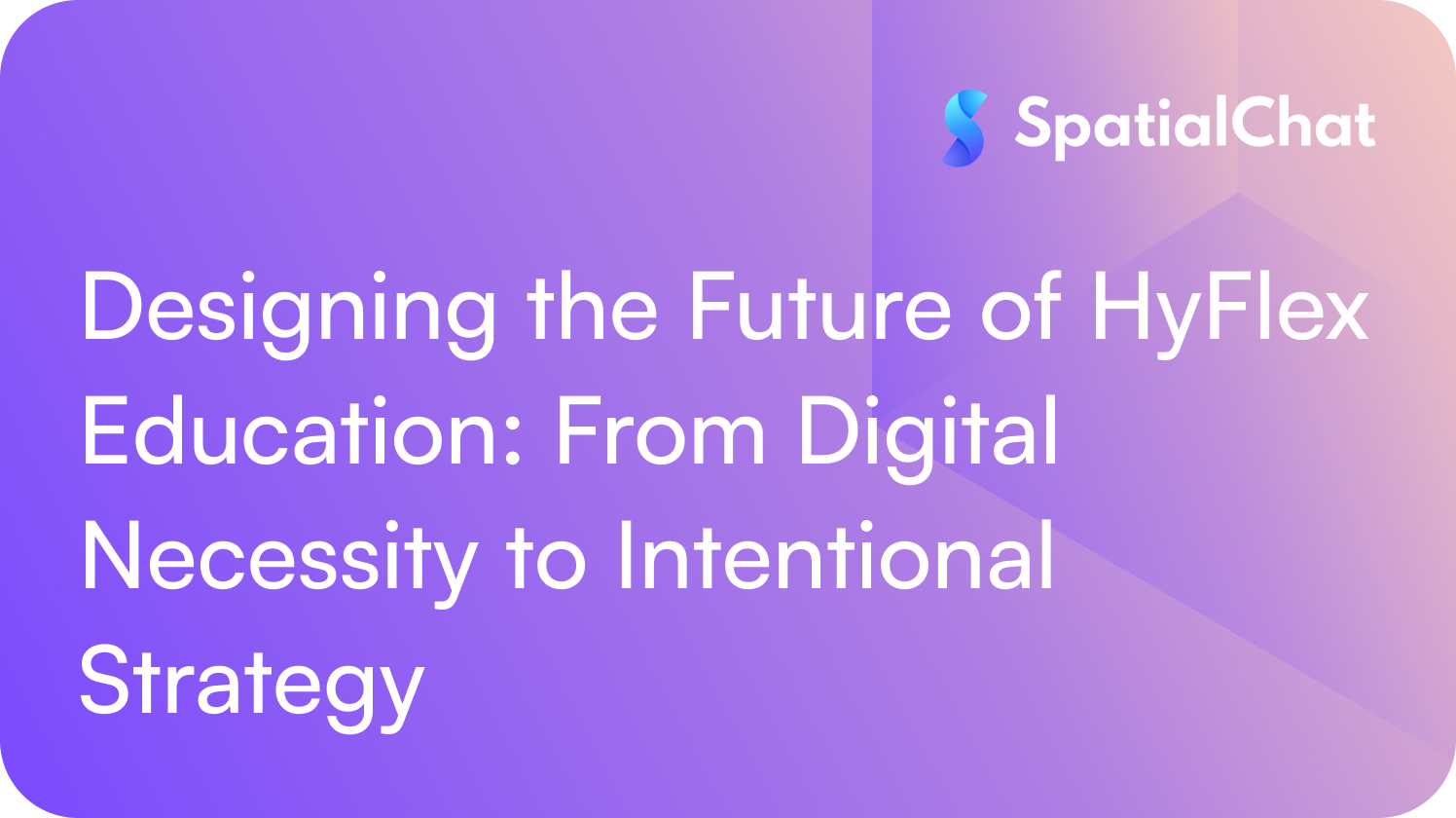The digital tools rapidly adopted during the Covid-19 pandemic have become an integral part of the modern higher education experience. As institutions move forward, the challenge is no longer whether to retain these tools, but how to strategically adapt them for a more engaging, equitable, and flexible hybrid learning environment. Enter HyFlex education: a model that gives students the freedom to choose how they engage with their courses, whether in-person, synchronously online, or asynchronously, without compromising on quality or access.
Moving Beyond the “Talking Head” Experience
One of the early realizations during the shift to online learning was the limitation of traditional synchronous platforms. While these tools enabled classes to continue during lockdowns, many lacked interactive features that are essential for meaningful learning. Simply streaming lectures online often created a passive, one-directional experience that didn’t meet student needs.
Today, educational technology has evolved to support dynamic interaction between students and instructors. Features that allow for greater personalization such as selective video sharing, real-time polls, or collaborative whiteboards can significantly enhance engagement. These tools empower educators to create more inclusive and interactive environments, where learners can participate in ways that suit their preferences and privacy needs.
Intentional Course Design: The Heart of HyFlex
Effective HyFlex education isn’t just about having the right tools. It’s about thoughtful integration. Educators must design courses with intention, considering how each component of the curriculum will function across in-person, synchronous, and asynchronous formats. This means asking key questions during course planning: What learning outcomes are best supported through in-person discussion? Which materials or activities can students engage with on their own time? How can these elements reinforce each other to ensure a cohesive experience?
Blending modalities effectively also encourages educators to rethink their approach to assessment, interaction, and feedback. In this model, flexibility doesn’t mean sacrificing rigor—it requires deeper intentionality and clarity in instructional design.
Learning Beyond the Classroom
A successful HyFlex experience goes beyond the virtual classroom. Encouraging interaction outside of scheduled sessions through online forums, collaborative projects, or gamified learning can help build a sense of community among students who may never meet in person.
Integrating elements that are familiar to students, such as social media-style engagement or microcredential-based incentives, can also make learning more relatable and motivating. These strategies not only increase participation but also foster peer-to-peer collaboration, which is essential in distributed learning environments.
The Power of Feedback Loops
Feedback is a cornerstone of effective education, and in HyFlex settings, it becomes even more critical. Digital platforms enable continuous, multi-directional feedback—from instructor to student, peer to peer, and even self-assessment.
Anonymous feedback tools, peer review features, and asynchronous discussion boards are all effective ways to keep students engaged and reflect on their progress. When used regularly, these feedback loops can enhance learning outcomes and strengthen the connection between learners and instructors.
Equity and Digital Access
While HyFlex models promise flexibility, they also raise important equity concerns. Not all students have equal access to reliable internet connections or up-to-date devices, and this digital divide can create barriers to full participation. Institutions must be proactive in ensuring that all students can access course materials, participate in discussions, and submit assignments regardless of their location or circumstances.
Equally important is ensuring that both students and faculty are properly trained to use learning platforms. There’s a tendency to assume that digital natives intuitively understand how to navigate online tools, but this is not always the case. Structured onboarding, training sessions, and ongoing support are essential components of a successful HyFlex implementation.
Smarter Use of Data
One of the advantages of modern learning technologies is the wealth of data they can provide. From participation metrics to quiz scores and feedback patterns, this information can be used to refine course delivery and identify students who may need additional support. Rather than waiting until the end of the semester for feedback, educators can use real-time insights to adjust their teaching strategies on the fly, making the learning experience more responsive and effective.
HyFlex education isn’t just a response to disruption; it’s a forward-thinking approach that meets learners where they are. When done right, it combines the best of face-to-face, synchronous, and asynchronous learning to create a model that is flexible, inclusive, and designed for the future of higher education. By investing in the right tools, thoughtful design, and continuous feedback, institutions can unlock the full potential of this transformative model.
